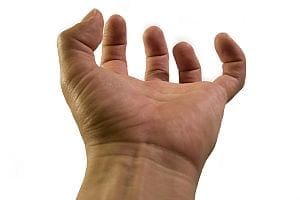statFor some women, it's about making an elegantement at special events or being a couple…

What Are “Extremity Adjustments” and How Can They Help?

Many people think chiropractic care is all about the spine, and it is true that spinal adjustments are a central component of what chiropractors do. However, the chiropractic approach can also be used to treat problems with other parts of the body, in particular, with the joints.
In the simplest terms, joints are the places where your bones meet, such as the jaw, shoulders, elbows, wrists, hips, knees, and ankles. Most of your joints are designed in such a way that they allow a particular range of movement. This requires that your bones, muscles and connective tissues be in good working order. The nerves that connect your arms, legs, hands and feet also need to be able to send and receive the correct information from your brain.
Within your joints, misalignment of the bones, soft-tissue restrictions, nerve impingement and inflammation can all cause pain and interfere with proper functioning. These sorts of problems can be caused by acute (sudden) trauma as well as chronic overuse or misuse. For example, carpal tunnel syndrome is a well-known, common condition resulting from repetitive use of the arm and wrist, usually due to computer work. Sports can lead to acute injuries such as sprains and strains, and can also lead to overuse injuries of the joints. Even everyday life has its risks, particularly for people whose musculoskeletal system may already be more fragile—for instance, seniors and those with chronic health conditions that affect bones, muscles and connective tissues
How can extremity adjustments help?
Extremity adjustments are based on principles that are similar to those that underpin spinal adjustments, and can resolve many joint problems quickly. The objective of extremity adjustments is to restore the normal range of motion of the shoulders, elbows, wrists, hips, knees or ankles. In some cases, extremity adjustments are combined with other types of treatment, including laser pain relief therapy and soft tissue manipulation as well as appropriate stretches and exercises for the involved joint(s). Custom-made orthotics can also be useful, and your chiropractor may collaborate with your allopathic doctor who might recommend a brace, medications, physical therapy, or surgery.
Each joint has specific adjustment techniques based on the muscles and bones in that joint. For example, for carpal tunnel syndrome, there are eight different wrist (carpal) bones that can be adjusted by your chiropractor. The middle bone (the lunate) sometimes falls forward causing pain, and an adjustment of that bone can often bring great relief.
What conditions are most helped by extremity adjustments?
Upper extremity adjustments are more common than lower extremity adjustments, mainly due to the fact that upper extremity injuries are more common within the general population. Additional injuries commonly helped by extremity adjustments include tendinitis, bursitis, TMJ, tennis elbow, arthritis, and fallen arches.
The main advantages of extremity adjustments over more traditional medical treatments are the high rate of success in eliminating pain and the absence of risks associated with drugs or surgery.
Patients who need extremity adjustments might complain of numbness or weakness in an extremity, stiffness, limited joint range of motion or joints locking up. If you are experiencing any of these symptoms, speak to your chiropractor about whether extremity adjustments might be appropriate for you.




